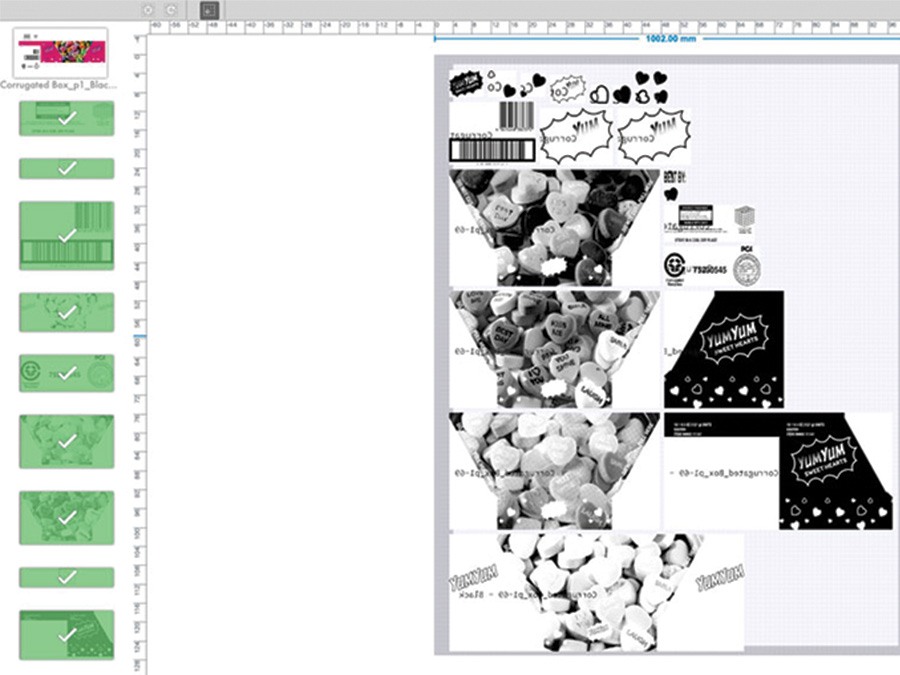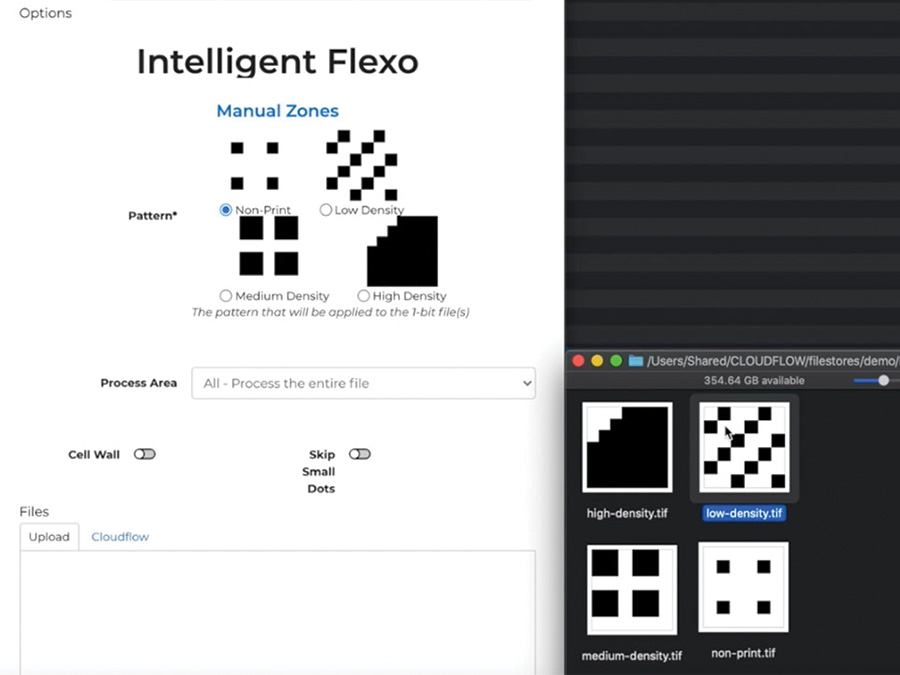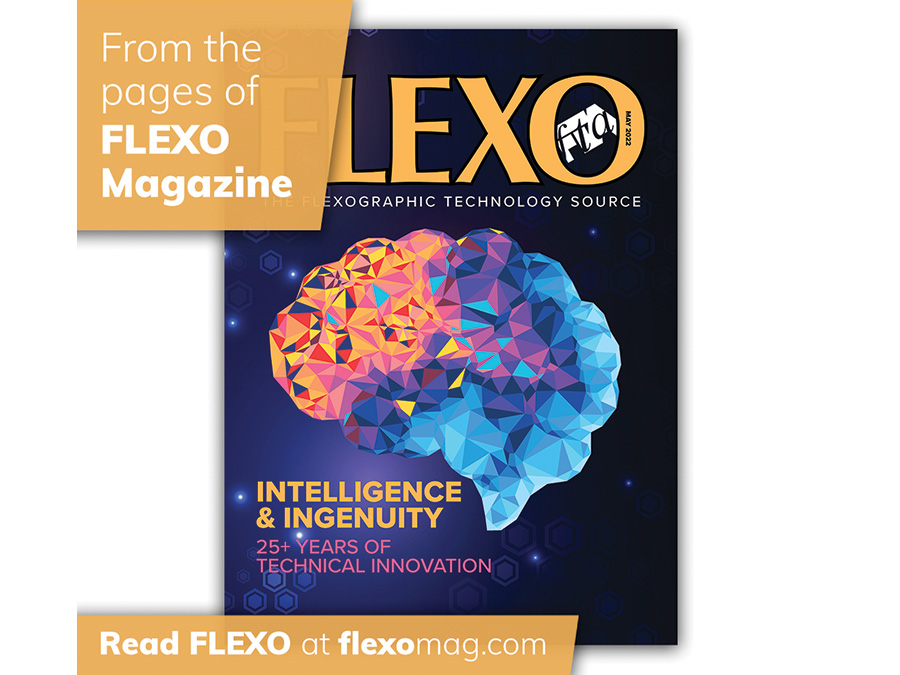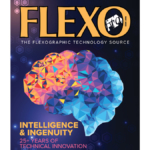25+ Years of FTA’s Technical Innovation Award: HYBRID Software
At HYBRID Software, we consider ourselves extremely honored to have been one of only two companies to ever receive an FTA Technical Innovation Award in two consecutive years—2020 and 2021.
It hasn’t been too long since we were so recognized, but the work isn’t done and we still strive to make these technologies—CLOUDFLOW Patchplanner and Intelligent Flexo—even more useful for our customers.
Steps taken to date are summarized below, as comment is offered on everything that is entailed.
CLOUDFLOW Patchplanner
Flexographic plates are very expensive. When producing a corrugated box, it is not unusual that only a tiny area is printed, even though the box and plates themselves may be large. In the past, a great deal of manual work was required to avoid imaging large flexographic plates with very few graphics.
CLOUDFLOW Patchplanner was presented as a web-based production tool that separates printed elements in the design file, and consolidates and optimizes them to take up the least amount of image space, minimizing material use. It was unique because it utilized a pure PDF workflow, a browser-based application, ties to MIS and features that are much more versatile than similar tools.

Tectonics incorporates all of the original, FTA Technical Innovation Award-winning CLOUDFLOW Patchplanner intelligence. Additionally, it includes scrap and cutoff inventory management of flexographic plates, creating an application that optimizes plate material and device usage, across different material and equipment.
The obvious objective behind development: Save plate material, and operate more efficiently and easily.
CLOUDFLOW Patchplanner pulls job MIS information; for example, polymer, thickness and sizes, among other variables. Thus, it automatically knows all of the job specs and embeds them into the mounter’s XML file. Other apps require users to physically work from the workstation where they are installed, one user at a time. Because CLOUDFLOW Patchplanner is accessed via a web browser using HTML5, it can uniquely work in a distributed world. Companies also set all their preferences, so everyone is operating under the same, standardized set of rules.
With CLOUDFLOW Patchplanner, users report saving five to 10 or more minutes to patch an entire job, and with far fewer errors. They process many jobs a day and that adds up. Customers document 50 percent prepress savings with the implementation of Patchplanner.
Scrap Control
In the two years that followed, we thought we could do an even better job. So, we took CLOUDFLOW Patchplanner apart and found additional features that could be implemented to address further flexographic plate optimization needs.
We created Tectonics. Now already in version 3.0, Tectonics incorporates all of the original CLOUDFLOW Patchplanner intelligence and adds even more.
For example, Tectonics includes scrap and cutoff inventory management of flexographic plates. Today, most trade shops cut plates, which leaves scraps. Hoping that they might be of future use, they stick them on a shelf. Do they ever use the plates? It’s a manual process—but it shouldn’t be that difficult to identify specific scrap plates that can be used efficiently for other jobs. Tectonics tells plate imaging operators which cutoffs they could use for a job and how to use them. They end up utilizing what could have gone bad on the shelf, invisible to the plate maker.
Tectonics still understands the heterogeneous reality of the production floor and works with customers on creating an application that optimizes plate material and device usage across different material and equipment brands. As a result, the software has a typical return on investment within the first six months.
“CLOUDFLOW Patchplanner was presented as a web-based production tool that separates printed elements in the design file, and consolidates and optimizes them to take up the least amount of image space, minimizing material use.”
Tectonics is able to handle both PDF and TIFF/LEN files for patching. It can handle stagger-cut file layouts. There are further advancements in the different mounting capabilities.
We are working to offer benefits to all flexographic print operations. There will be more utilities to come, with greater optimization beyond corrugated layouts. Trade shops and wide web are most challenging. It will be optimized for flexible packaging and labels as well.
With COVID, print facilities have had to adapt at times, with complete prepress staffs doing work remotely. As with other HYBRID Software web-based solutions—including HYBRID Intelligent Flexo—operators have been able to use all CLOUDFLOW products from home. Of course, plates still have to be physically placed on mounters and sent to cutters. However, they have been able to maintain a streamlined process.
Intelligent Flexo
The challenge for every trade shop or printer/converter is to print as well as they can, cost-effectively. One of the most important determinants is producing high-quality plates as easily and effectively as possible. A popular solution has been to print at 4,000 dpi, combined with a high-definition modulated screening algorithm. This solved many problems for flexographic printers, but it remains a one-dimensional method that introduced, if nothing else, slower plate making imaging speeds.
Intelligent Flexo applies screening modifications to post-RIPped files. This allows for more control, so users can identify problem areas in the images that require intervention before printing on the press, to save time and valuable resources.
We wondered if there was a way to print better without investing so much money; particularly for a smaller shop that does not have the resources to do so. Could someone improve printing, even at lower resolutions? Some have been successful, but only within proprietary systems that were not easily installed in environments with diverse equipment and software.
HYBRID Intelligent Flexo is truly ubiquitous. Printers have the choice to select the RIPs, plates and imaging technologies themselves, even from existing equipment and software systems. Basically, we developed technology to mimic digital dot etching, helping to disrupt ink viscosity and utilize more fluid to reproduce graphics better.
Then there was the creativity: Users can import their own customized special patterns and area parameters into Intelligent Flexo, so that it is truly specific to each printer. The significance is not the screening options HYBRID offers but, more important, the freedom to experiment with any screening a printer wants, delivering unique print results to their clients.

Intelligent Flexo, a 2021 FTA Technical Innovation Award recipient, applies screening modifications to post-RIPped files. This allows for more control, so users can identify problem areas to save time and valuable resources.
HYBRID Intelligent Flexo accepts and outputs any resolution-independent screened file. It does so by being a post-RIP solution; not one that attempts to resolve screening from within the application. It fits into any environment.
Testing has been more difficult with the shortage of media and during the past couple years. But, we do know many vendors have embraced HYBRID Intelligent Flexo and there has been fast adoption among many people. Wide web flexible printing on film has been particularly popular among its largest users.
The challenge reporting individual successes is quite unique. In many cases we do not know about new applications because, quite simply, HYBRID Intelligent Flexo is open to customers’ imaginations. Those who have embraced it are using Intelligent Flexo to help image plates. However, because it is an open, configurable system, they are not telling us what they have uniquely—and proprietarily—achieved.
What we have been able to glean is that those who image flat top dot plates seem to have the best results. That has usually delivered greater ink transfer with less ink and better print quality control.
While our customers are often the heroes of their own applied screening technologies, we have helped them. We have built increased optimization algorithms for greater file processing and faster speeds and throughput. We have also seen and experimented with our own screening algorithms and have come up with new screening technologies as options. Like all of our new and existing product development, we will continue to find others.
About the Author
Mike Agness is executive vice president, HYBRID Software, Americas. The firm delivers innovative prepress software solutions to various packaging-related businesses. HYBRID’s software tools are flexible, open, built on industry standards and have proven to provide significant efficiencies to the packaging industry. HYBRID Software Group is comprised of HYBRID Software, Global Graphics (Harlequin RIP), Meteor Inkjet, Xitron and ColorLogic GmbH.


